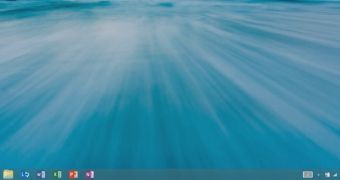Windows 8.1 will represent not only the first major makeover for Windows 8, but it will also mark the return of the Start button, a very popular feature removed by Microsoft from its latest OS.
While this should be great news for consumers who have already migrated to Windows 8, some of them think that bringing back the Start button in Windows 8.1 is actually a sign of defeat for Microsoft, even though the company has clearly explained that it wants to get closer to its users.
The YouTube page of Microsoft’s first Windows 8.1 video preview is filled with comments that criticize Microsoft for its decision, but also call for a real Start button that would launch the traditional Start Menu.
In Windows 8.1, the button would only get users to the Start screen, thus providing them with a quick option to access the Metro UI.
“Windows 8 to have the start button in the lower left corner is a sign of defeat and, ultimately, it's a sign of Windows 8's failure to attract customers with its new features. I think that Microsoft just threw way too many new things at us in one package. If they did what Apple and Android do and increment new changes at a steady pace (every 6 months or so), Windows 8 could have been a lot more successful,” one user explained.
Some other users, however, think that the Windows 8 hate was mostly caused by the major changes Microsoft has implemented into the operating system.
People have serious problems when it comes to getting used to new features, so the lack of Start button made everything a lot more confusing for rookies, they say.
“People hate change. 3 years from now, people are going to hate Windows 10 and talk about how great 8 was and so forth. So quit your whining and accept change old timers,” a YouTuber posted.
In the end, the Start button will be back in Windows 8.1 and since you might not like it, Microsoft is also providing a dedicated option to disable it and stick to the new Windows 8 UI. That’s because they’re listening to users.

 14 DAY TRIAL //
14 DAY TRIAL //